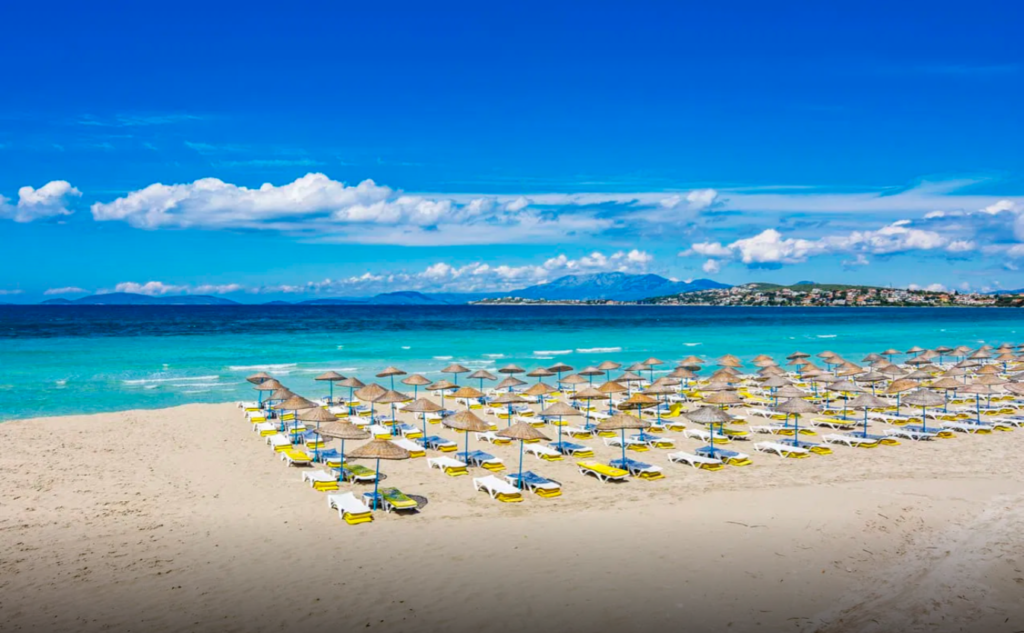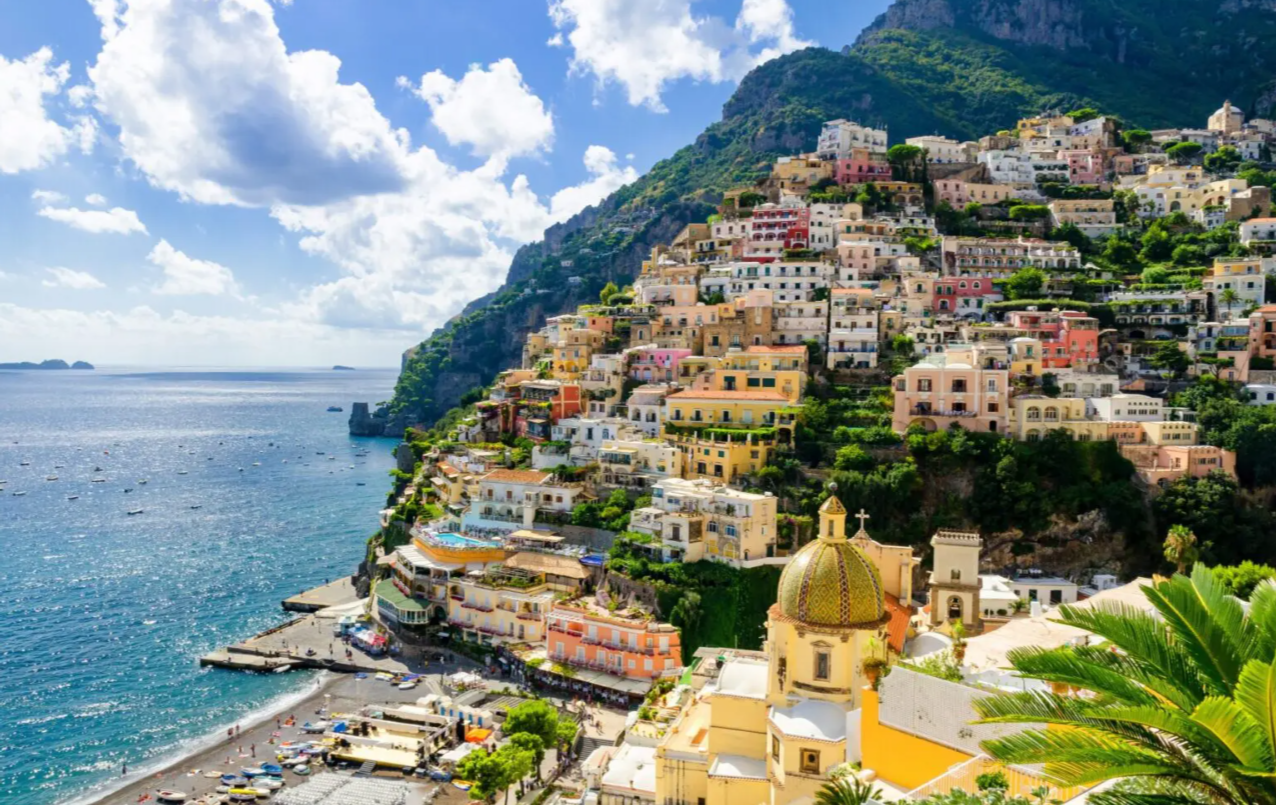Amalfi Coast, Italy: Stunning Cliffside Villages and Azure Waters
The Amalfi Coast, located in southern Italy, is one of the most breathtaking destinations in the world. Stretching along the Tyrrhenian Sea, this UNESCO World Heritage Site is renowned for its dramatic cliffs, charming villages, and shimmering azure waters. Each turn along the winding coastal roads reveals postcard-perfect vistas of cascading hillsides, vibrant bougainvillea, and sparkling beaches. The Amalfi Coast offers an enchanting blend of natural beauty, rich history, and Mediterranean charm, making it a must-visit destination for travelers seeking a slice of paradise.
The Magic of Cliffside Villages
The Amalfi Coast is home to a series of picturesque villages, each with its own distinct character and allure. These charming towns cling to steep cliffs, creating stunning panoramas that captivate visitors.
Positano: The Vertical City
Positano, often considered the crown jewel of the Amalfi Coast, is a vision of pastel-colored buildings cascading down the cliffs to the turquoise sea. Known as the “Vertical City,” its narrow, winding streets are lined with boutique shops, art galleries, and cafes. The Spiaggia Grande, the town’s main beach, offers a perfect spot to relax and soak in the views. For a more intimate experience, visit Fornillo Beach, a quieter and less crowded alternative.
A hike along the Path of the Gods (Sentiero degli Dei) offers breathtaking views of Positano and the surrounding coastline. This trail, starting in Bomerano and ending in Nocelle, is a favorite for outdoor enthusiasts seeking a blend of adventure and natural beauty.
Amalfi: The Heart of the Coast
Amalfi, the namesake of the coast, is a historic town that was once a powerful maritime republic. The town’s centerpiece is the Amalfi Cathedral (Duomo di Sant’Andrea), an impressive structure blending Romanesque, Byzantine, and Moorish architectural styles. The cathedral’s stunning façade and beautiful cloister make it a must-visit.
Amalfi is also famous for its paper-making tradition, which dates back to the Middle Ages. A visit to the Museum of Handmade Paper (Museo della Carta) provides insight into this ancient craft.
Ravello: A Hilltop Haven
Perched high above the coast, Ravello offers sweeping views and a tranquil atmosphere. This elegant town has long been a haven for artists, writers, and musicians. The Villa Rufolo, with its beautifully landscaped gardens and panoramic terraces, is a highlight. Another must-visit is the Villa Cimbrone, known for its Terrace of Infinity, where the views stretch endlessly across the sea.
Ravello is also home to the famous Ravello Festival, an annual celebration of music and arts that attracts performers and visitors from around the world.
Praiano: A Hidden Gem
For those seeking a quieter alternative to Positano and Amalfi, Praiano is a charming village that exudes authenticity and relaxation. Its peaceful beaches, such as Marina di Praia, are perfect for escaping the crowds. Praiano is also known for its traditional ceramic art, which can be found in local workshops.
Atrani: The Smallest Village
Atrani, one of the smallest villages in Italy, is a hidden gem with a picturesque setting. Its charming piazza, narrow alleys, and beautiful beach make it a delightful spot to explore. Atrani’s intimate size and local ambiance offer a glimpse into traditional Amalfi Coast life.
Azure Waters and Beaches
The Amalfi Coast’s crystal-clear waters and scenic beaches provide the perfect setting for relaxation and recreation. While many beaches are small and nestled between cliffs, their natural beauty is unmatched.
Spiaggia del Duoglio, near Amalfi, is a secluded beach known for its pristine waters and opportunities for snorkeling. Accessible by boat or a steep staircase, it offers a sense of exclusivity.
Fiordo di Furore is a dramatic fjord-like inlet with a tiny pebble beach and a picturesque bridge. This hidden spot is perfect for those seeking a unique and quiet escape.
For a luxurious beach experience, Marina Grande Beach in Positano provides sun loungers, umbrellas, and a lively atmosphere with nearby restaurants and bars.
Boat tours are a popular way to explore the coast and its hidden coves. These excursions often include stops for swimming, snorkeling, and exploring sea caves such as the Emerald Grotto (Grotta dello Smeraldo), a stunning cavern illuminated by emerald-green light.

Cultural and Historical Riches
The Amalfi Coast’s rich history and culture are evident in its architecture, traditions, and cuisine. Many of the villages date back to medieval times and have preserved their historical charm.
The Vallone delle Ferriere, a lush nature reserve near Amalfi, features ancient ruins of ironworks and paper mills, offering a glimpse into the region’s industrial past.
The Path of the Lemons, a scenic walking route between Maiori and Minori, showcases the region’s famous lemon groves. Lemons are an integral part of Amalfi Coast culture, used in everything from culinary dishes to the iconic limoncello, a sweet lemon liqueur.
Culinary Delights
The cuisine of the Amalfi Coast is a celebration of fresh, local ingredients and Mediterranean flavors. Seafood is a staple, with dishes like spaghetti alle vongole (spaghetti with clams) and risotto ai frutti di mare (seafood risotto) being particularly popular.
Other regional specialties include scialatielli, a handmade pasta often served with seafood, and melanzane alla parmigiana (eggplant Parmesan). Fresh mozzarella, tomatoes, and basil feature prominently in many dishes, reflecting the simplicity and quality of Italian cooking.
Desserts such as delizia al limone, a lemon sponge cake, and sfogliatelle, a flaky pastry filled with ricotta, are perfect for those with a sweet tooth. Pair your meal with a glass of local wine or a refreshing limoncello to complete the experience.
Exploring Beyond the Coast
While the villages and beaches of the Amalfi Coast are its main attractions, the surrounding region offers additional opportunities for exploration.
The nearby island of Capri, with its rugged cliffs, luxury boutiques, and the famous Blue Grotto, is a popular day-trip destination. Ferries and private boats provide easy access from the mainland.
For hiking enthusiasts, the Sentiero degli Dei and other trails offer unparalleled views of the coastline and surrounding mountains. These routes range from leisurely walks to challenging treks, catering to all levels of hikers.
The ancient ruins of Pompeii and Herculaneum, preserved by the eruption of Mount Vesuvius in AD 79, are within driving distance of the Amalfi Coast. These archaeological sites provide a fascinating look into Roman life.
Practical Tips for Visiting the Amalfi Coast
Navigating the Amalfi Coast can be an adventure in itself. The narrow, winding roads offer stunning views but can be challenging for inexperienced drivers. Public buses and ferries are convenient alternatives for getting around.
The best time to visit is during spring and early autumn, when the weather is pleasant, and the crowds are smaller. Summer is the busiest season, with warm temperatures and lively beach scenes.
Accommodations range from luxury hotels with sea views to charming bed-and-breakfasts in quieter villages. Booking well in advance is recommended, especially during peak travel periods.
Why the Amalfi Coast Enchants Visitors
The Amalfi Coast is a destination that embodies the essence of la dolce vita, the sweet life. Its stunning landscapes, charming villages, and azure waters create a paradise that feels both timeless and magical. Whether you’re savoring fresh seafood by the sea, exploring ancient cathedrals, or simply soaking in the breathtaking views, the Amalfi Coast offers moments of pure joy and wonder.
For those seeking a destination that combines natural beauty, cultural richness, and Mediterranean charm, the Amalfi Coast is an unforgettable experience that will leave you dreaming of a return visit.
